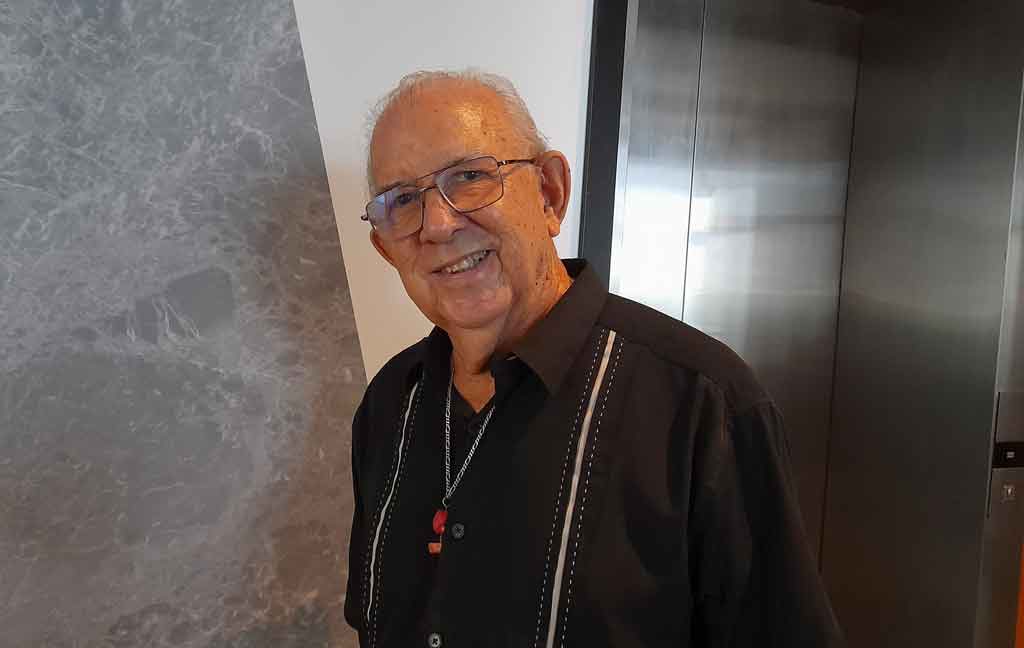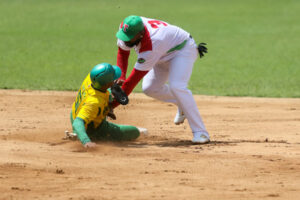The art in her hands embellished each movement until it became a symbol of Cuban culture, so that the imprint and spirit of Alicia Alonso (1920-2019) live on in the most important national dance competition.
With the humility that defines him and the wisdom of dedicating himself body and soul to this event, the historian of the National Ballet of Cuba (BNC), Miguel Cabrera, spoke exclusively to Prensa Latina about the 28th Alicia Alonso International Ballet Festival of Havana, to be held from 28 October to 10 November.
I have been fortunate enough to have been present at all 27 Festivals and to have been a member of the Organising Committee since 1974, together with Alicia and Fernando Alonso,» he said.
According to her, the prestigious event, established in 1960, had two main objectives: the first was to show the world the progress of this discipline in the Caribbean nation, achieved thanks to the legacy and image of the prima ballerina assoluta, and the second was to enrich the dance culture of this people.
She possessed what she called the gift of bringing people together, as her talent and greatness brought ballet lovers from all over the world to her homeland, she added. It was 1960 and a new life was beginning in Cuba for the ballet, which had been dissolved since 1956 due to the aggressions of Fulgencio Batista’s tyranny, he recalled.
After the revolutionary triumph in January 1959, the company was reorganised and the following year the first Festival was held in a format still in embryo.
Fidel Castro, then prime minister, signed Law No. 812, which definitively guaranteed state protection for the BNC, he recalled.
With this security for the future, the inaugural edition was convened, although with the passage of time the immense task was to develop it, he said.
The 1960 edition was followed by those of 66 and 67, a time that was wisely waited for, said the expert, whose reasons he discusses in his book «Festival Internacional de Ballet de La Habana (1960-2004) Una cita de arte y amistad» (Havana International Ballet Festival (1960-2004), published in 2006.
It was the great rise of ballet in the country, the company was consolidated and the first graduation of the National Ballet School took place in 1968, from which outstanding dancers emerged.
It was the generation of Jorge Esquivel, Orlando Salgado, Lázaro Carreño, Rosario Suárez, Amparo Brito; that new impetus gave life to the Festival, he said.
Showing the world the achievements of the renowned school has been the first great objective of the biennial event, from the 1974 edition to the 2024 edition, said the specialist.
Cabrera will present two books as part of the international event: «Ballet Nacional de Cuba, seven decades of choreographic creation» and «Alicia, el ballet y yo», written during the Covid-19 pandemic with the pretext of returning to this famous artist, her wisdom, history and presence in Cuban culture.
The BNC has created an amazing repertoire that includes 785 titles, by 214 choreographers from 29 countries, which is astonishing, he said. «Many of these works are also part of the history of the artistic event, created in this context.
They are premieres in Cuba that have nourished our culture, world creations performed by groups and notable personalities. That is the compass of the Festival, to show what is ours and to enrich ourselves with all that is good, he said.
For someone who preserves so much wisdom and anecdotes, it is impressive to affirm that the BNC treasures 785 works in classical, romantic, neoclassical, contemporary and fusion styles, from La siesta de un fauno – the first to be staged on 28 October 1948 – to Lucile, exhibited in July this year.
We have enjoyed everything from Alicia Alonso tapping her feet with Antonio Gades to the most tremendous avant-garde, it is a party, Cabrera said, and then quoted a phrase from the Cuban writer Alejo Carpentier that always accompanies the Ballet Festival: «The spirit of dance is inseparable from the human condition».
Through the language without words, the language of movement, a bridge can be built in this convulsive world in which we live, not only of artistic wealth, but also of human understanding, he explained.
The BNC historian considered the event as a showcase of Cuban culture, referring to the contribution of musicians, companies and plastic artists, whose works give prestige to the costume designs and scenography.
He compared Cuban dance to a tree, with a solid trunk and many branches, «and those branches have always been present». This year the competition has a particular emphasis and it is nice to see new companies with a history that will enrich that range, he said.
The transcendence and importance of each Festival, in which stars with equal virtuosity and passion for shoes converge, is indisputable. Maestro, which one do you consider special?
They all have a tremendous moment, but I’ll stick to just one, the one in 1978, when the 30th anniversary of the BNC and the 35th anniversary of Alicia Alonso’s debut in the role of Giselle, on 2 November 1943, was commemorated, he recalled.
In his opinion, the performance of the famous performer put Cuba on the world ballet map, proving that Latin Americans could dance the classical heritage, which until then had been reserved for Slavic or Anglo-Saxon dancers. On the other hand, she assured that the event would not have been possible without this group.
Everything has paid tribute to these two moments, she declared, «very important companies and stars have participated thanks to the name of this woman and the masterpiece that is the BNC, this is the unifying gift that makes this dance festival possible».
You can almost feel the spirit that embraces the art in spades, as in a few weeks Cuban and international figures of the highest calibre will take to the stage to reverence the power of dance and of an institution that is part of the nation’s cultural heritage.
When the curtain rises, there will be Miguel Cabrera in the front row, with whom a conversation awakens the sensations of watching a dance performance: beautiful, enriching and pleasurable.
It is a journey through the paths of this expression, of a symbol and a Festival that he defines as a «bridge of art and friendship, an embrace from Cuba to the world with the desire for art and peace through dance».




